When designing any program or project for your nonprofit, it’s essential to plan how you will monitor and evaluate that program. Grantmakers will ask you to explain exactly how you will do that, but even more importantly, designing the monitoring and evaluation plan will help your program and future programs be more successful. It will help you understand which strategies are working/worked, which strategies need to change, and what the program’s impact was.
A monitoring and evaluation (M&E) plan should act as a living document, changing as your needs change and as you have realizations about what, how, and when you need to monitor and evaluate throughout your program. An M&E plan can be both in a table format as well as a narrative format. Either way, it will need to include:
- How and when you will collect, analyze, and report the data (activities)
- Who will be responsible for each of these steps (responsibilities)
- How you will safely store the collected data (data security)
- How it will evaluate the project (evaluation plan)
- How and when the data might be used to improve strategies or redesign activities (learning)
How you will collect and analyze data
Incorporate both qualitative and quantitative methods into your M&E plan for a well-rounded approach. Quantitative data is data that can be counted and measured, so anything that can be portrayed with numbers. Qualitative data provides descriptions, characterizations, and narratives of information. It’s not countable in its current form, but it is codeable.
Quantitative data collection methods include:
- Tracking the number of participants, services provided, and materials produced by your nonprofit.
- Tracking outcomes of your participants and services. For example, a job readiness program would track the number of participants who obtained jobs after completing their program and their job retention rates 6 and 12 months after program completion.
- Evaluating participant opinions of your program by conducting surveys that rank your services in a series of questions. For example, on a scale of 1 to 5 (1 being poor and 5 being excellent), how well do you feel our job readiness program prepare you for the job market?
Qualitative data collection methods include:
- This can also include surveys, but with questions that allow for short or long written answers. For example, “In your own words, how would you describe your experience in our résumé writing class?”
- One-on-one interviews with participants, both pre- and post- participation. Having both allows you to compare data for stronger evaluation.
- Focus groups or group interviews of participants, stakeholders, or community members.
A grantmaker might require that you already have some of your materials developed and will ask for an example survey, interview questions, etc. Be prepared to know what questions you will be asking and why: What do you need to know about how your program is working and the impact it is having?
If you’re not sure, look at your logic model or program goals. If one of your goals is to train 150 people in your job program over the course of two years, build in the monitoring tool of tracking that information and reviewing it every month or every quarter. Then if you’re falling behind on that goal, you can plan to change your strategies to increase participation. The same goes for outcomes for your participants.
If you want 50% of your participants to have jobs by the end of their program participation, make sure you have methods for tracking that, including program workers confirming participant employment with employers. Then to track job retention, you would need a system in place for program workers so that they build into their calendar a 6-month and 12-month check-in with their participants’ employers, for example.
And that’s just the basics. Evaluating survey and interview data is more complex and requires specific methodologies guided by theory. This is where and outside evaluation firm can really take your efforts to the next level. However, you can also do some studying yourself to develop a methodology appropriate for your nonprofit’s program. I recommend starting with books like Research Design: Qualitative, Quantitative, and Mixed Methods Approaches by John W. Creswell and J. David Creswell.
As you’re designing your own methods and choosing a methodology, keep in mind that grantmakers might have their own M&E requirements and language for talking about M&E. Follow those to a T in your grant proposal.
Getting it done
The bigger and more complex the grant project, the more you should consider hiring and outside firm to monitor and evaluate it; this might even be required by federal or international grants. Usually, grantmakers will allow you to budget part of the grant (for example, up to 10% or 15% of your grant funds) for monitoring and evaluation costs. If that cost is allowed, definitely take advantage of it.
Developing a sound M&E plan can be time-consuming and require some research, but it is ultimately worth it. Not only will it improve your grant proposals (or even just fulfill the basic requirements of some), it can lead to stronger programs for your nonprofit.
Need help developing and M&E plan? We can help! Check out our one-on-one coaching services HERE.






